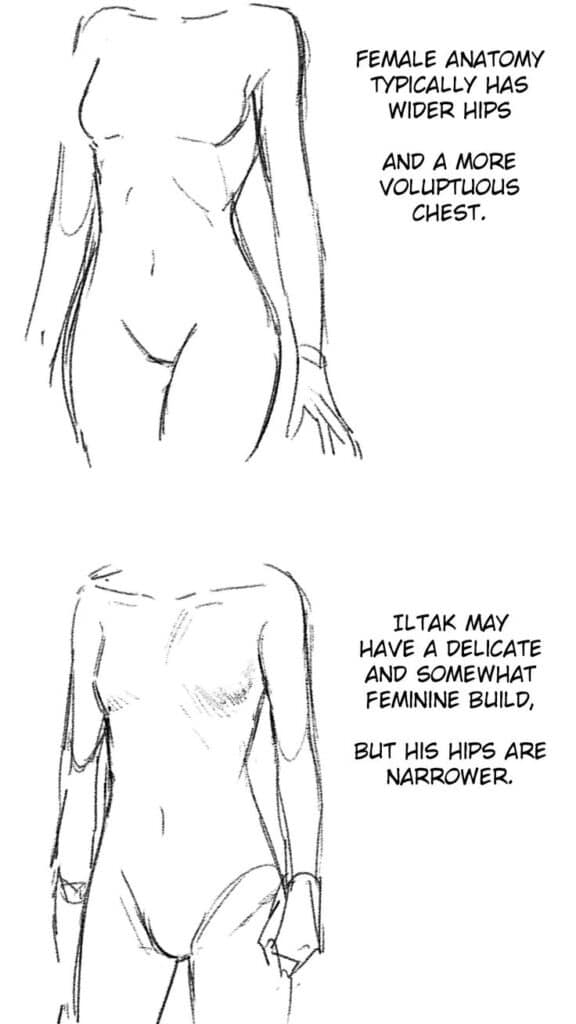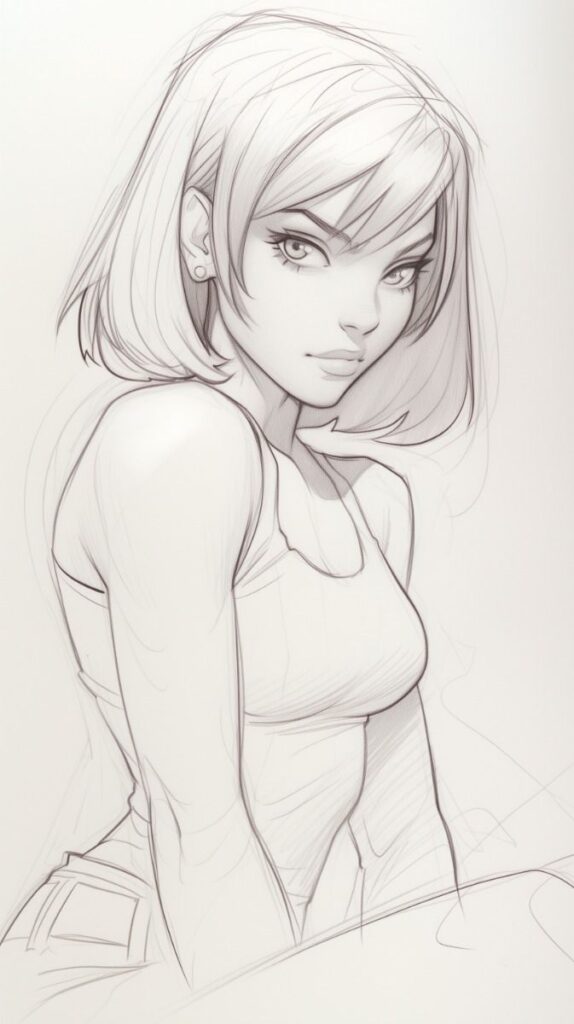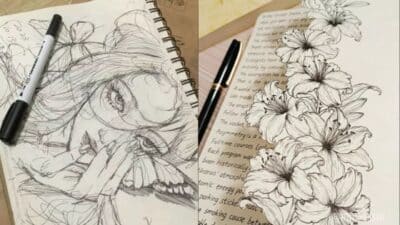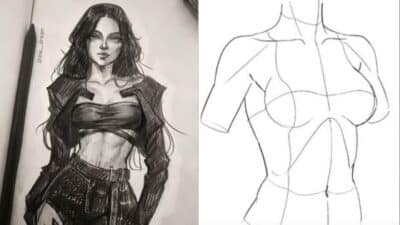Drawing the female body can be both exciting and challenging for artists at any skill level. Many seek fresh ideas and references to capture the natural curves, proportions, and movement accurately. The key to creating compelling female body drawings is to study diverse body types while practicing anatomy and gesture to bring life and realism to each sketch.
Artists can explore a wide range of styles, from quick sketches that focus on movement to detailed studies of anatomy and form. Using references, whether from photos, live models, or art boards, helps improve understanding. This approach opens up many possibilities for creativity and personal expression in each drawing.
Essential Concepts for Female Body Drawings
Accurate female body drawings require a clear grasp of underlying anatomy, proper proportions, and natural posing. These elements help create believable and dynamic figures that reflect real human form. Mastery of these foundations guides the artist through every stage of the drawing process.
Understanding Anatomy Basics


Learning the major muscle groups and bone structures is vital for realistic female body drawings. Key areas include the shoulder girdle, ribcage, pelvis, and limbs. Knowing how muscles overlay the skeleton helps in portraying volume and movement.
Familiarity with differences in female anatomy compared to male—such as wider hips, narrower shoulders, and softer muscle contours—enhances drawing accuracy. Visualizing bones beneath the skin adds depth and prevents flat or unnatural shapes.
An artist can practice by sketching simple shapes to represent bones and muscles, gradually adding details to show how skin stretches or folds over them. This approach builds confidence and improves figure drawing.
Exploring Body Proportions


Proportion plays a crucial role in making the female figure look balanced and lifelike. Typically, the female body is about 7 to 7.5 heads tall. The torso length, leg length, and arm span should align with classical human proportions but with subtle differences that define femininity.
Common proportional markers to observe include:
- Head height compared to torso length
- Waist width relative to hips
- Arm length reaching mid-thigh
Using guidelines or construction lines can help place these elements correctly. Artists often start with circles or ovals to map out the head, chest, and hips to create a proportional framework.
Breaking Down Poses


Posing brings a drawing to life by adding personality and emotion. Understanding joint placement and how the body moves is key. Joints act as pivot points for movement, such as the shoulders, elbows, hips, and knees.
Starting with basic shapes to outline the head, torso, and hips makes it easier to position limbs naturally. Attention to weight distribution—how the body balances or shifts—ensures the pose feels believable.
Artists benefit from observing real-life or reference photos, focusing on how muscles contract and stretch in different positions. Simplifying complex poses into manageable shapes helps avoid stiffness and maintains fluidity.
Creative Female Body Drawing Ideas
Exploring different ways to draw the female body helps artists develop skills in anatomy, movement, and style. Focusing on specific types of poses and figures makes practice more engaging and varied.
Expressive Action Poses


Drawing dynamic action poses captures energy and emotion. Artists should study body weight distribution and muscle tension to make movements believable.
Popular poses include running, jumping, or stretching with visible muscle engagement. Using reference photos or videos enhances accuracy in depicting limbs and torso angles.
Artists may start with quick gesture sketches to capture the flow, then add details like clothing folds and facial expressions. These poses show life and character in the figure.
Elegant Fashion Figures


Fashion figures focus on elongated proportions and graceful posture. The goal is to emphasize style and clothing rather than anatomical precision.
Artists often use stylized lines to highlight the length of limbs and the curve of the waist. Attention to drapery and fabric texture helps convey different materials.
Poses tend to be static or subtly moving, such as walking or standing with a hand on the hip. Fashion drawing encourages experimentation with outfits and accessories to tell a story visually.
Dynamic Movement Studies
Movement studies break down complex motions into simple steps. This approach helps understand how joints bend and muscles contract during activity.
Sketching short sequences, like a dance move or athletic gesture, allows observation of timing and balance. Artists focus on progression, showing how one pose shifts naturally into another.
It’s useful to include multiple angles to see how the body changes in space. This practice builds confidence in drawing varied and realistic female figures in motion.
Styling Your Female Drawings
Styling female figure drawings can deeply affect their visual appeal and emotional impact. It involves choices about art styles and how to express character through posture, clothing, or facial expression. These elements bring life and uniqueness to the artwork.
Incorporating Different Art Styles


Artists can explore realistic, stylized, or abstract approaches to the female body. Realistic drawings focus on accurate anatomy and subtle shading to reflect natural forms. Stylized art exaggerates or simplifies features for clarity or emotional effect, such as elongated limbs or bold outlines.
Experimenting with mediums—like charcoal for softness or ink for strong lines—also shapes style. Combining traditional and digital techniques allows control over texture and color. Keeping proportions intentional helps maintain consistency across different styles.
Trying multiple styles encourages growth and fresh perspectives on figure drawing.
Adding Personality to Figures


Infusing personality into female drawings makes them more engaging and relatable. Small details, like a confident stance, tilted head, or hand gestures, communicate mood or story.
Clothing, hairstyles, and accessories reflect identity or setting. Even subtle facial expressions can indicate emotion or attitude. Planning poses that reflect the character’s role or temperament adds depth.
Using a color palette that matches the figure’s vibe can reinforce personality. For example, warm tones might suggest energy, while muted colors hint at calmness.
These choices create memorable, individualized figures beyond anatomical accuracy.
- 3.0Kshares
- Facebook0
- Pinterest3.0K
- Twitter0


